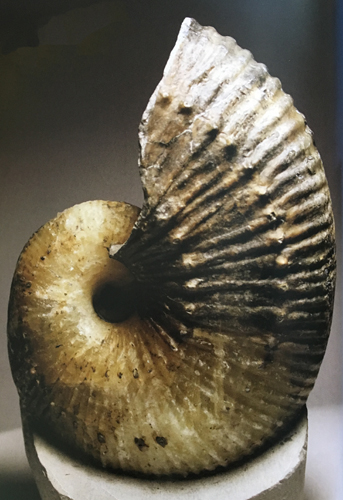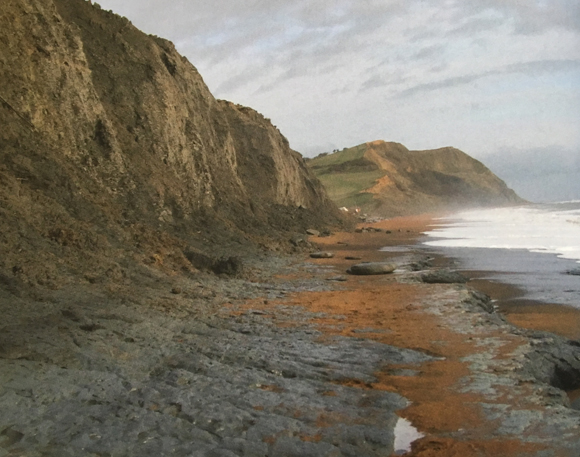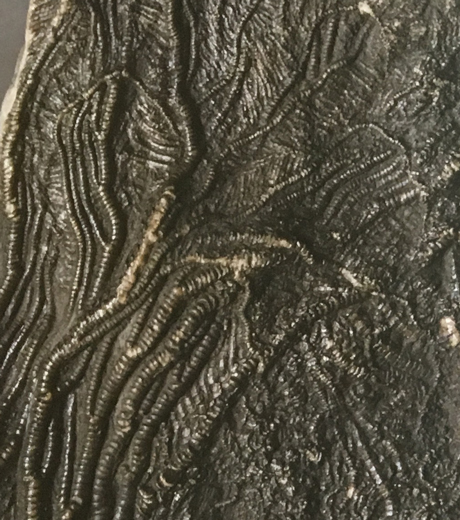“A Guide to Fossil Collecting on the West Dorset Coast”
“A Guide to Fossil Collecting on the West Dorset Coast” – Book Review
At a conference in a rather chilly Helsinki held seventeen years ago this week, delegates of the World Heritage Committee of the United Nations Educational, Scientific and Cultural Organisation (UNESCO), confirmed that World Heritage Site status would be conferred upon a 95-mile stretch of the coastline of southern England covering the east Devon and Dorset coast.
In the minutes of the conference, the reason for this award was recorded:
“The Dorset and East Devon Coast provides an almost continuous sequence of Triassic, Jurassic and Cretaceous rock formations spanning the Mesozoic Era, documenting approximately 185 million years of Earth history. It also includes a range of internationally important fossil localities – vertebrate and invertebrate, marine and terrestrial – which have produced well-preserved and diverse evidence of life during Mesozoic times.”
The “Jurassic Coast”
However, this description does not convey the true majesty of this location, nor does it provide a sense of awe that this part of the British Isles inspires in so many people. Neither does it do justice to the simple pleasure of finding a fossil, gazing at it and realising that you are the first living creature in 180 million years to set eyes upon the petrified remains of what was once another inhabitant of our planet.
Then a book is published, a book that provides a sense of the stunning natural landscape, a book that transports the reader back in time, a book that conveys the sense of excitement and achievement associated with fossil collecting – “A Guide to Fossil Collecting on the West Dorset Coast” – does all this and more.
The Front Cover of “A Guide To Fossil Collecting on the West Dorset Coast”

Picture credit: Siri Scientific Press
Conveying a Sense of Beauty, Conveying a Sense of Wonder
Authors Craig Chivers and Steve Snowball focus on one part of the “Jurassic Coast”, that beautiful coastline that runs east from Lyme Regis to the foreboding cliffs of Burton Bradstock. First the scene is set. There is a brief description of the geological setting and an outline of the contribution to science of arguably Dorset’s most famous former resident, Mary Anning, and then the reader is taken in Mary’s footsteps through a series of guided walks travelling eastwards along the coast and forwards in time to explore the geology and remarkable fossil heritage of this unique sequence of sedimentary strata.
The Book is Filled with Stunning Photographs of Fossil Discoveries
Picture credit: Siri Scientific Press (fossil found and prepared by Lizzie Hingley)
A Reference for All Collectors and Fossil Enthusiasts
Drawing on their detailed knowledge of fossil collecting, Craig and Steve describe what to look for and where to find an array of fossil specimens along this part of the “Jurassic Coast”. The landscape is vividly portrayed and the book provides a handy, rucksack-sized reference for fossil collectors, whether seasoned professionals or first time visitors to Dorset. We commend the authors for including copious amounts of helpful information on responsible fossil collecting and for publishing in full the West Dorset Fossil Collecting Code.
Breath-taking Views of the Natural Beauty of the Coastline
Picture credit: Siri Scientific Press
Recreating Ancient Environments
Talented palaeoartist Andreas Kurpisz provides readers with digital reconstructions of ancient environments and brings to life the fossil specimens, showing them as living creatures interacting with other prehistoric animals in a series of Jurassic landscapes and seascapes. These reconstructions help to document the changing environments that are now preserved within the imposing cliffs of this remarkable part of the British coastline.
Crinoids (Sea Lilies) from the West Dorset Coast
Picture credit: Siri Scientific Press
Spokesperson for Everything Dinosaur, Mike Walley commented:
“This guide manages to capture the beauty and the fascination of this part of the “Jurassic Coast”. It is a “must have” for all fossil collectors and if ever the delegates at that UNESCO conference needed to reaffirm their decision to grant this stunning part of the British coastline World Heritage Site status, this book provides ample evidence to justify their original decision.”
For further information and to order this exquisite guide book: Order “A Guide to Fossil Collecting on the West Dorset Coast.”




